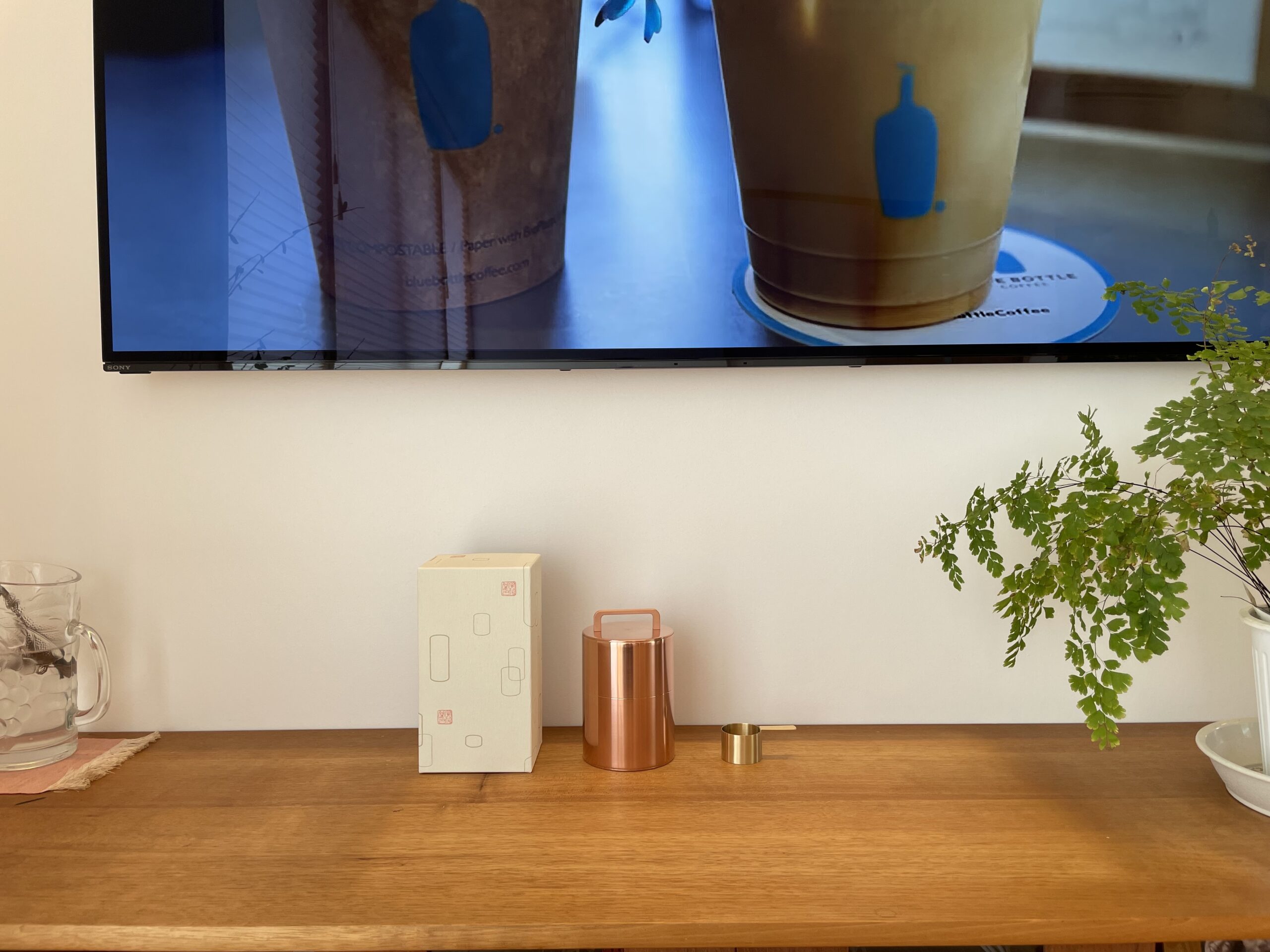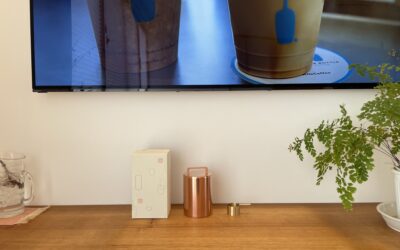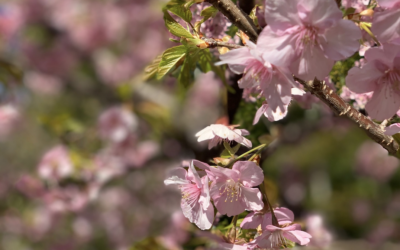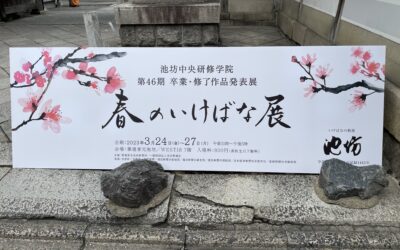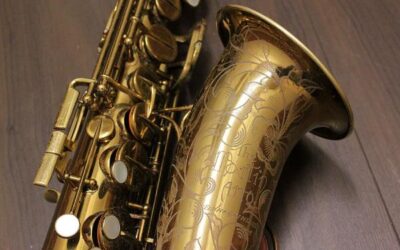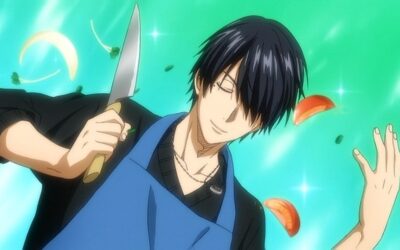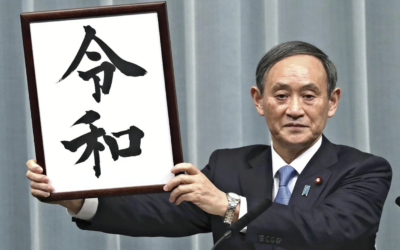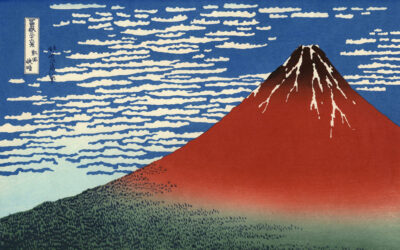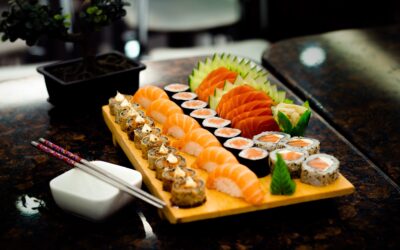Have you ever heard of “Tea Caddy”? This thing, called “Chazutsu” in Japanese, is a daily commodity for Japanese green tea drinkers. This article will introduce one traditional Kyoto craft company that has elevated this daily commodity to a premium product.
Dealing With the Most Premium Green Tea Caddies
Green Tea Canister’s History in Japan
A tea caddy is about a tea canister for Japanese green tea. Tea canisters might be imagined as a simple metal or paper box that can store red tea leaves and tea bags, especially in Europe. On the contrary, in Japan, green tea has been drunk since ancient, so tea caddies for the Japanese have meant the storages of green tea leaves.
The Japanese green tea history is old, but in fact, the Japanese tea caddy one is not as old as they seem. It is said, as mentioned in the link above, that the history of green tea was launched by the import from China in the Nara period (710-794). However, the cultivation method of the tea leaves and the production method have changed to the demands of the times.
And it was not so long ago, in 1738, that the Japanese landed on the current mainstream, “Sencha”, in which leaves are steamed, not fermented like black tea, and rubbed and dried. Until then, green tea had been the one for the upper classes, but the establishment of the sencha manufacture brought the rapid spread of tea to the citizens of the Edo period.
However, with the spread of Sencha, they were also concerned about how to preserve it. The higher the humidity, the more Sencha loses its fragrance. Therefore, to protect tea leaves from the high humidity in Japan, they have developed highly airtight containers, which are the tea caddies.
Initially, It was the normal style that tea caddies were made of wood or wood coated by lacquer. This style still remains today and is also valuable for the Japanese traditional craft. However, this style was not suitable for mass production.
During this Edo period, at the same time that sencha was spreading, there was another industry that spread as well, which was metal processing. In particular, the establishment of a technology to make metal bendable by processing it thinly boosted the mass production of tea caddies and airtightness performance for storing tea leaves for longer. The final shape of the tea caddies established at that time, which have a double-layered structure with an outer lid and an inner lid, is still used today.
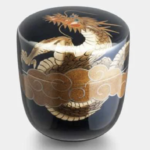
WAJIMA FINISH NATSUME RYU MAKIE
Product type: Matcha Tea Storage
Distributor: Osaka Suzuki
Availability: BECOS
1875 Established in Kyoto, KAIKADO
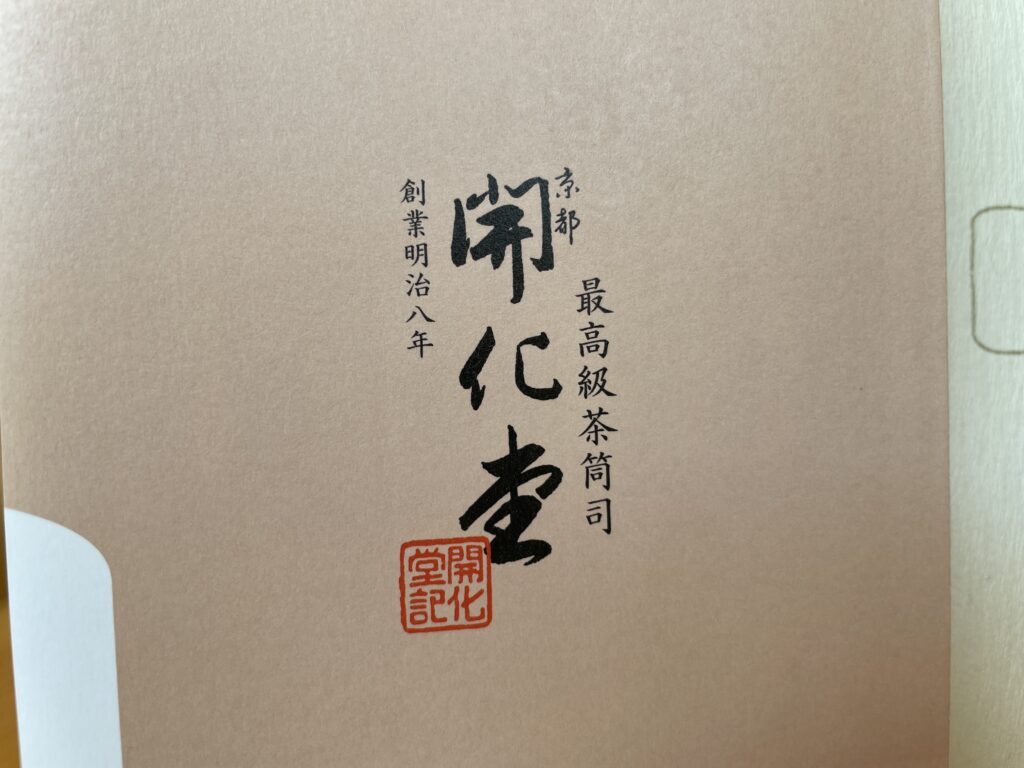
Kaikado was founded in 1875, at the end of the Edo period, when Japan was actively importing new civilizations from the West. This company specializes in the manufacture of handcrafted green tea caddies and is the oldest in Japan in this field. Their most notable feature is that, since their establishment over 100 years, they have made tea caddies using the same manufacturing method.
They have manufactured tea caddies made of materials, which is based on tin plates covered by copper plates or brass ones with no machine, only craftsmen’s technique.
Pursuing Both Use and Beauty
Their Craftsmanship Realizing the High Airtightness
The greatest feature that Kaikado tea caddies have offered is the high airtightness. This feature has been meticulously constructed through over 130 processes, which are executed by their craftsmanship, and the first time when we experience closing the outer lid, we will realize the awesome feature.
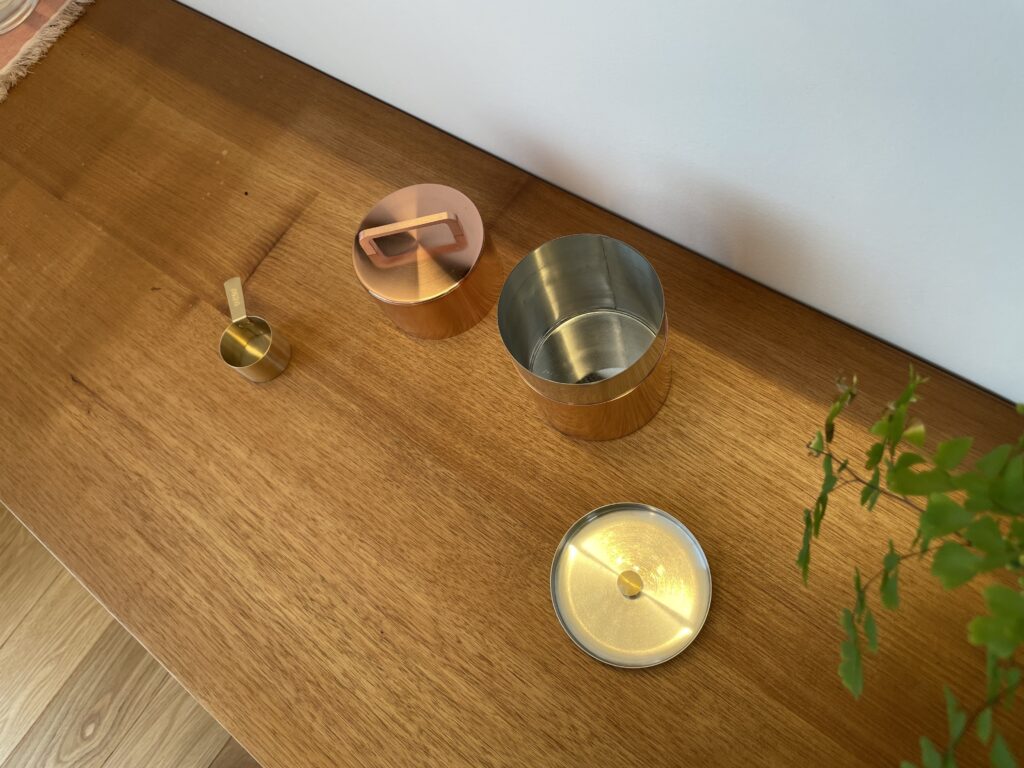
The shape of Japanese tea caddies is almost cylindrical. This consists of 3 parts, a cylindrical foundation case, an inner lid, and an outer cylindrical case. The outer cylindrical case covers the cylindrical foundation case after the opening is closed by the inner lid.
This structure brings two features to them. The one is that the motion that the outer lid covers the foundation case can escape the inner air to the outside. The other is that the length of the contact point between the two cylinders can block the inflow of air outside. These two features can make the inside of the tea caddies more airtight and keep the tea leaves fresher, which would otherwise oxidize and lose the flavor through contact with air.
Useful Over 100 Years
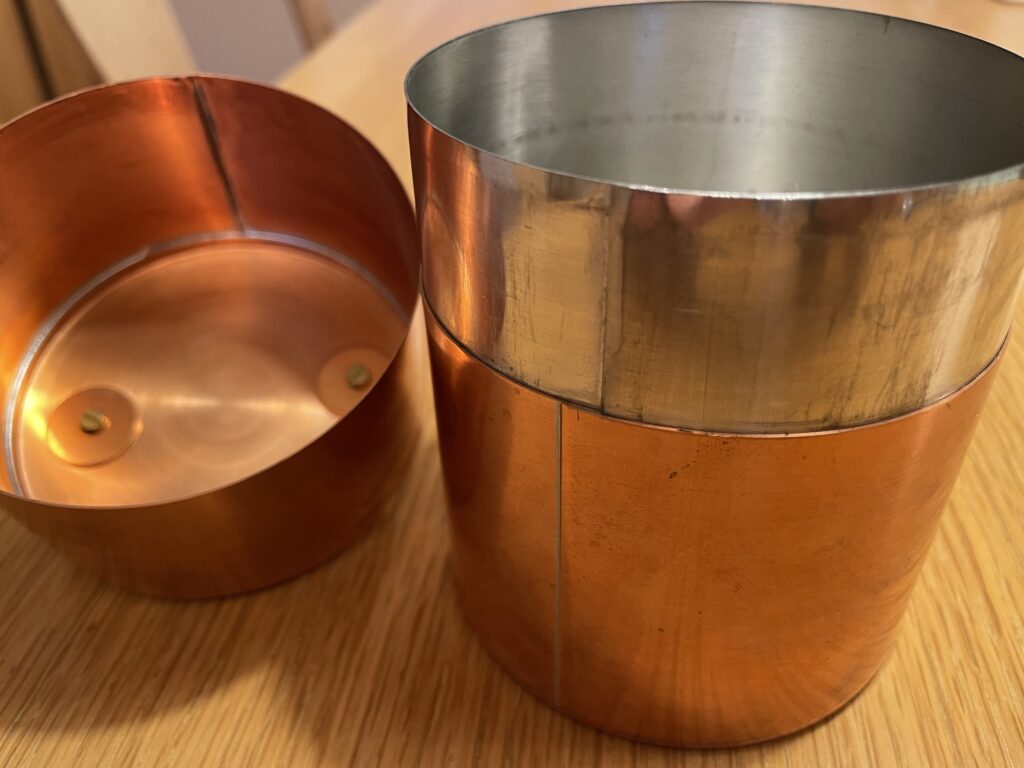
It is easier said than done to create this structure. If this design was not good, the contact point between the two cylinders would be too loose to maintain airtightness or would be too tight to contact. Even if the design was so good, the same issue would happen with the shape changes due to metal fatigue. Kaikado has solved this issue through their craftsmanship and has maintained it as a traditional craft.
When you used their tea caddies, you immediately could notice their quality. When the outer lid of the tea caddy and the lower box are in contact with each other’s cut edges and allowed to stand vertically, the lid automatically closes at a certain slow and constant rate. This achievement requires a structure in which the accuracy of the two gaps between the outer lid and the foundation box have the same distance at any cross section in their long contact point.
It is surprised that these tea caddies are made by more than 130 manual processes and most of all, that they have been handed down for more than 100 years. So, Kaikado is able to provide services for keeping good condition of even 100-year-old tea caddies because they have maintained the same process for over 100 years.
The Material Beauty with Aging
In addition to the high airtightness, Kaikado tea caddies have another notable feature, which is about the metal material. They have 3 types of metal material products, which consist of tinplates only, tinplates covered by brass plates, and tinplates covered by copper’s.
Tinplates have been built into the inside of their products, which are necessary to touch tea leaves. Tinplate is corrosion resistant, harmless to food, and easy to bend. So, it is not strange for tinplate to be used in this way. Their incredible feature, which has elevated industrial products to valuable crafts, is for tinplate to be covered by other material plates. These material plates, tinplate, brass plate, and copper one, have produced “Aging Beauty”.
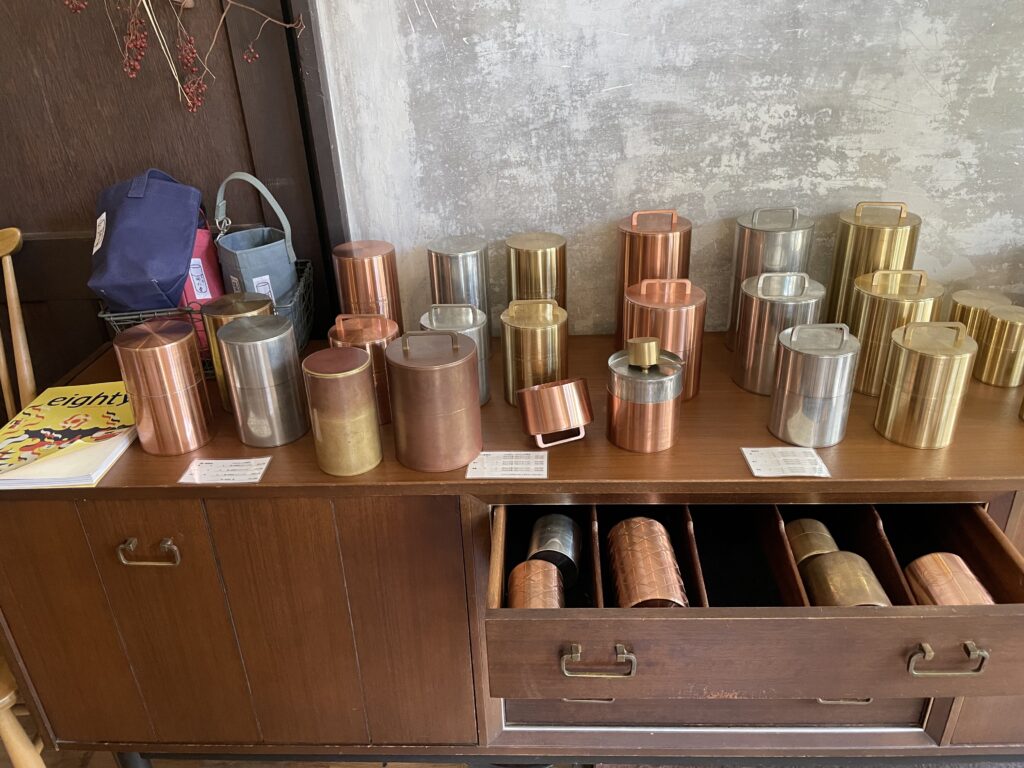
This makes effective use of metal oxidation. This phenomenon may soon remind you of iron rust. This iron rust has a bad impression because if the more allowed to stand, it will degrade the performance of products more and more. Recently, improvements of coating technologies have prevented the deterioration, but these may tend to conceal the texture of metals.
Kaikado has allowed metals to oxidize, rather they turned the negative situation to a good one. They have combined the essential feature of tea caddies, which is required to preserve tea leaves, with the interior materials such as copper and brass. They are originally easy to be manufactured, corrosion-resistant materials, and less emphasized than other materials such as aluminum, so they can work well with various interior styles changing rapidly with the times.
Suggesting New UX for Tea Leaves Storage
Not Only Storage, But Also Interior
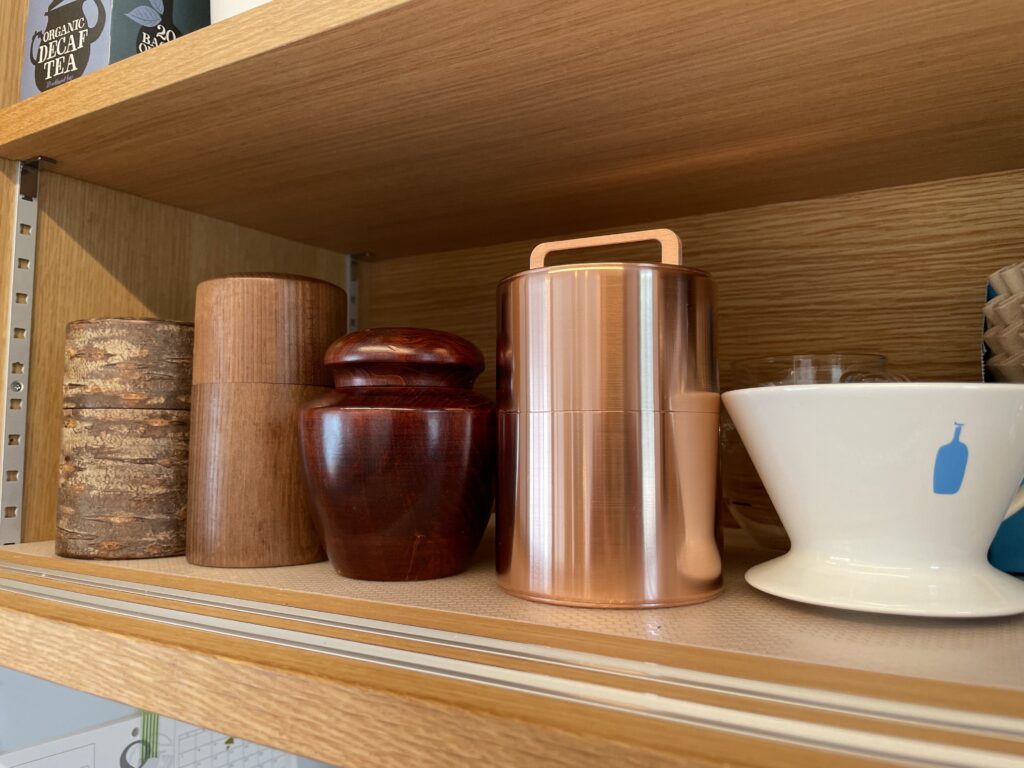
The purpose of Japanese tea caddies has been to store tea leaves and protect them from deterioration, so they have been usually stored away in a cupboard and hidden except when in use. Kaikado overturned this conventional. They gave their tea caddies dual features: storage and interior. They have continued to perform all of their processes by hand of craftsmen in order to achieve both of these features because of keeping their quality.
Of course, this could not be an easy road. The event that caused them the most difficulty was era of mass consumption and long-term economic slump in Japan. These events had demanded both cheap and high-quality products from them. They were temporally driven to corner of going out of business.
New Buyers
However, God was with them. New buyers of their products have increased gradually. They are “foreign travelers”.
Kaikado has operated a workshop in Kyoto and based their sales activities in Kyoto, which is one of the most famous tourist cities around the world. Especially in recent years, tourists tend to seek experiences of Japan’s wonderful culture rather than sightseeing or souvenirs.
Japanese traditional crafts are categorized as one of these experiences, so their unchanging and functional tea caddies are great valuable to foreign travelers, who can further continue the value experience by purchasing and taking them home.
Multi Use of Food-Storage
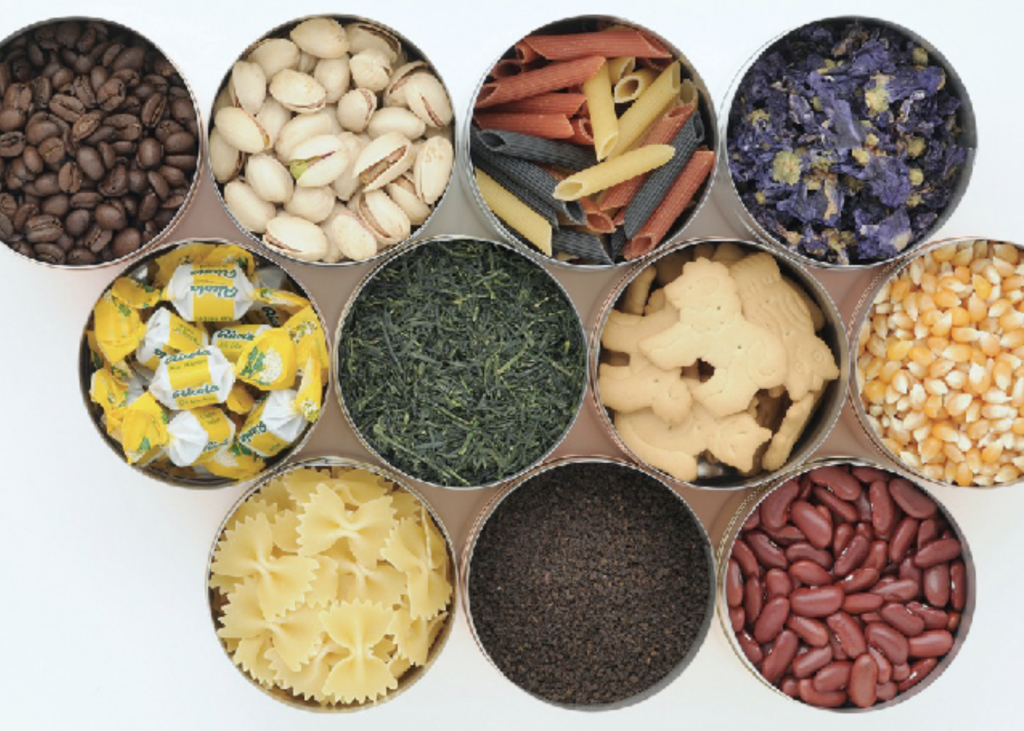
©Kaikado
Furthermore, foreign travelers find these products more valuable as food storages than as tea canisters. Particularly, coffee storages, as called coffee caddies are very popular for them. Particularly, coffee storages, as called coffee caddies are very popular for them.
Originally, Kaikado had been manufacturing and selling only tea caddies since their founding, but around 2010, they had a chance to produce a coffee caddy to commemorate the 15th anniversary of a coffee bean distributor. This coffee caddy could earn higher grade response than expected, riding the wave of the popularity of coffee among the world.
Their Steadily Expanding Portfolio
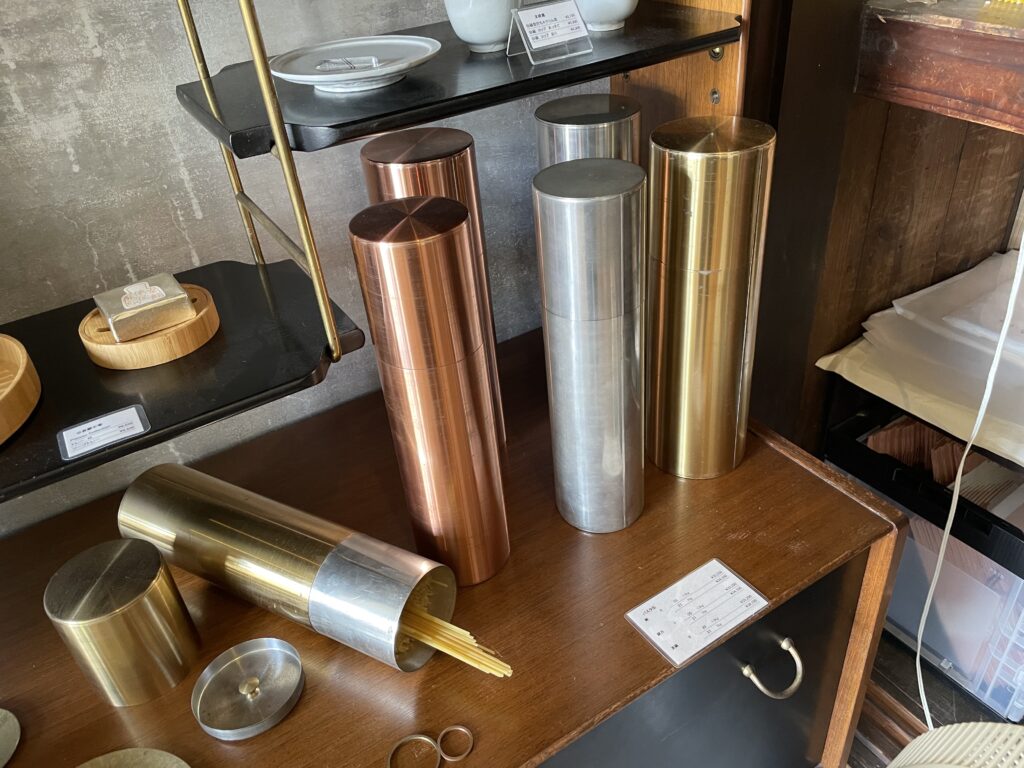
Coffee caddies became an important part of Kaikado’s portfolio, and they recently opened their own café, called Kaikado Cafe, roasting and selling their original coffee beans. Now, they are also expanding horizontally into pasta caddies and other products, recommending various food preservation practices, and collaborating with other companies.
It is said that Japanese traditional crafts have invariant value and appeal. This is their histories that Japanese traditional crafts have been created and continued by not only Kaikado but also other craftsmen.
We believe that these should be one of the role models for modern industries to seek sustainable societies. However, it is ironic that their value is understood more by foreigners than by the Japanese.

